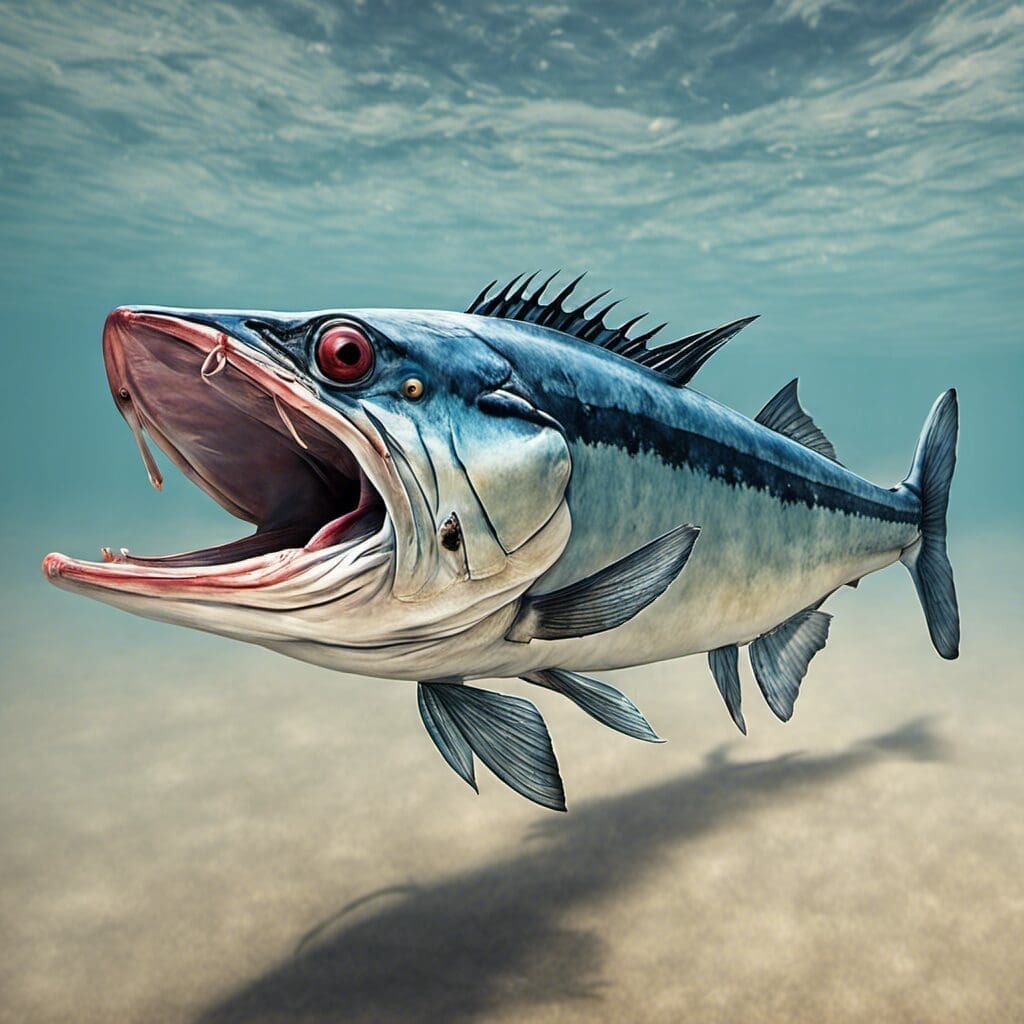Introduction
The Wahoo fish, scientifically known as Acanthocybium solandri, is a member of the mackerel family (Scombridae). Renowned for its speed and high-quality meat, it’s greatly prized by sport fishers and home cooks alike.
Conservation Status
Wahoo fish are not listed on the International Union for Conservation of Nature’s (IUCN) Red List. It’s believed they have a worldwide population that is healthy and sustainable. Conservation efforts specific to this species are not heavily reported, as there is no current imminent threat to their global populations.
Statistics
| Length (Average) | 1-1.5m |
|---|---|
| Weight (Average) | 20-40lbs |
| Average Lifespan | 6 years |
| Maximum Speed | Up to 60mph |
Distribution
Wahoo fish can be found in tropical and subtropical seas worldwide. They often prefer offshore environments, near the surface. Notably, Wahoo doesn’t have fixed migration patterns, but some groups are known to move towards warmer waters during the colder months.
Habitats
These fish typically inhabit blue waters in the open sea, preferring a temperature range of 24 – 28℃. Despite being a pelagic species, they can sometimes be found in depths up to 400m.
When and Where to See
Wahoo are more likely to be sighted during window periods of warmer sea temperatures. From sunrise to mid-morning seems to be the best time of day to spot them.
Best Fishing Locations
- The Bahamas
- Florida, USA
- Bermuda
- Cabo San Lucas, Mexico
- Hawaii, USA
- North Carolina, USA
- Queensland, Australia
How to Catch
High-speed trolling using lures is the most popular method to catch a Wahoo. Best time of day for fishing is early morning. Spring to fall is generally considered the best time of year, as the water temperature is most suitable.
Preferred bait or lures
Squid or mackerel lures are commonly used, but high-speed trolling lures are also effective.
Identification Guide
Wahoo fish have slender, elongated bodies with a blue around the upper body, and a silver underside. A series of 25-30 dark bars run along their sides. Their mouth is large with strong, triangular teeth.
Culinary
Wahoo is considered a delicacy with its firm, white to light-cream colored flesh delivering a delicate and mild flavor. It’s high in protein and loaded with essential vitamins and minerals. It’s great for grilling and also works well in stews and salads.
Additional Information
Wahoo fish are very aggressive predators feeding on other fish and squid. They have high-speed hunting skills, known for their sudden burst to catch a prey. Threats to Wahoo fish include large predatorial species, such as bigger fish and sharks, and humans who fish them for sport or commercial reasons.
References and Further Reading
For more detailed information about Wahoo fish, kindly refer to:

